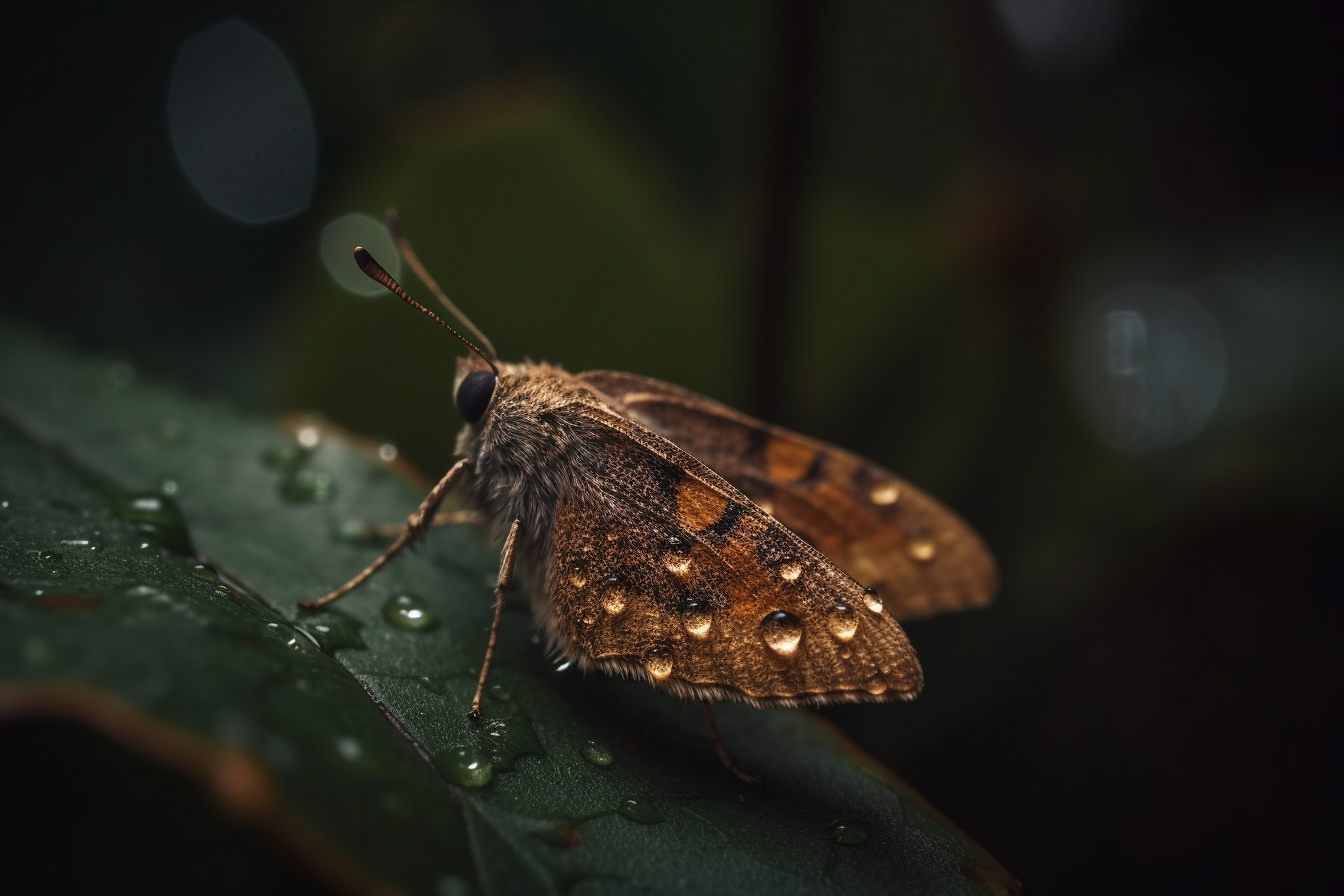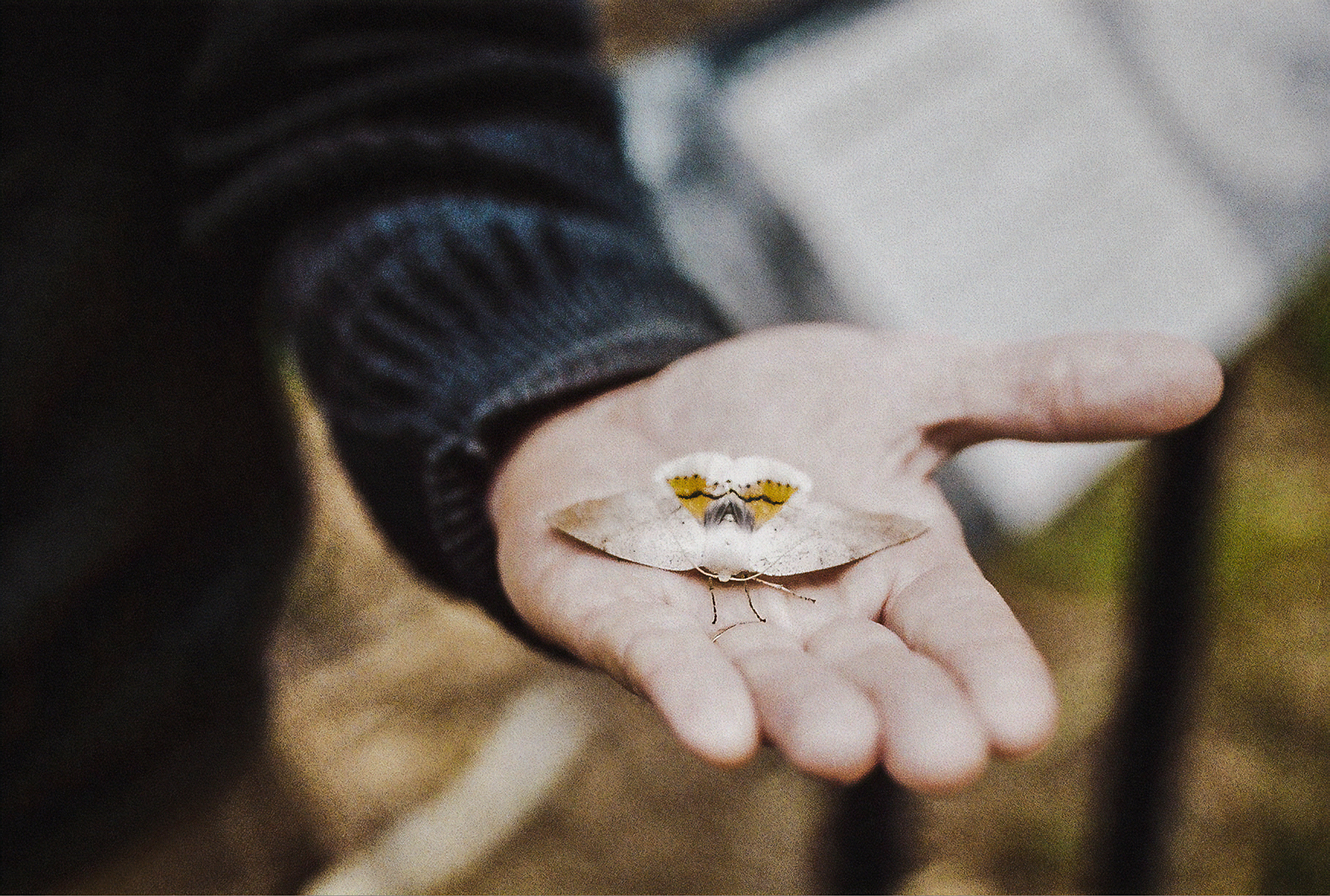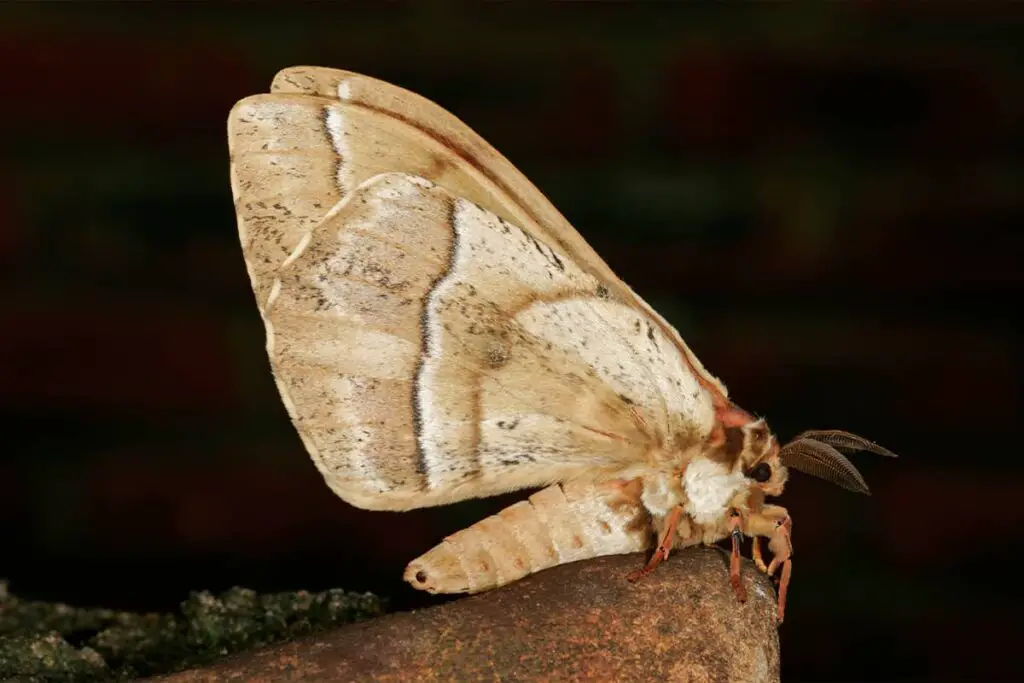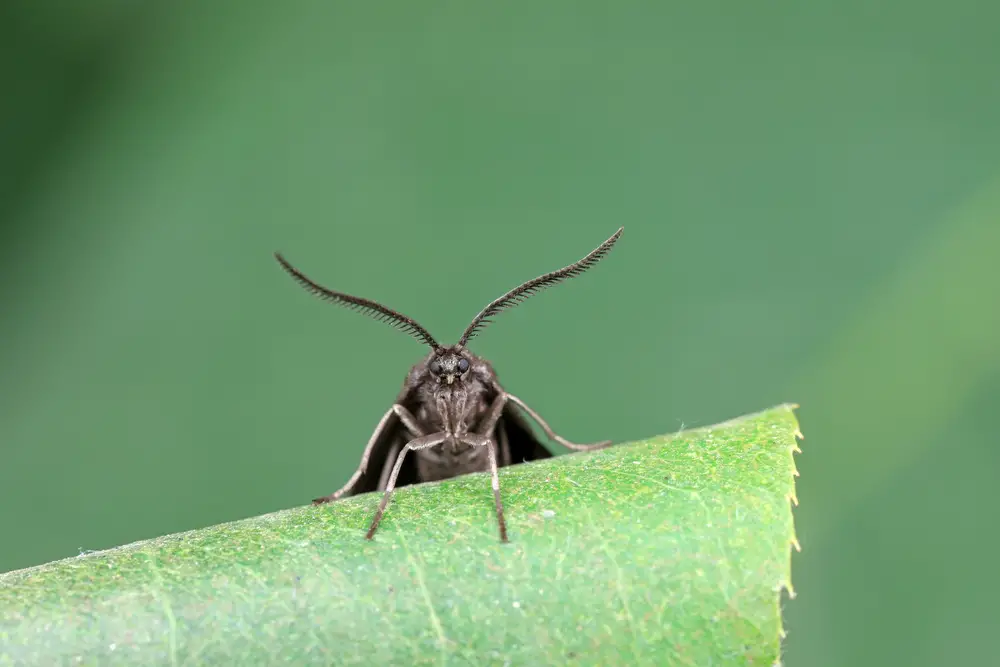
As someone who has always been fascinated by the behavior of insects, I’ve often wondered where moths go when it rains. Rain can be quite an obstacle for these small, winged creatures, so it’s natural to be curious about how they cope with such weather conditions!
Moths are not particularly fond of rain and usually seek shelter when a downpour begins. They tend to find refuge under leaves or branches, or within small cracks and crevices, waiting patiently for the rain to pass before resuming their activities.
It’s amazing how these delicate insects are able to adapt to the challenges posed by their environment, continuing their life cycles even during inclement weather.
Moth Behavior During Rain
Avoidance of Rain
When it rains, moths will typically seek shelter to avoid getting wet. They’ll take cover under leaves, branches, or even hide in cracks in buildings until the rain passes. Their preference for dryness and avoidance of rainstorms can be attributed to their delicate wings and nocturnal nature.
Impact on Flight
One of the primary reasons moths avoid rain is due to the impact it can have on their flight. Their wings are covered in tiny scales that, when wet, can make it more challenging for them to take to the skies. For this reason, I have often noticed moths folding their wings together, waiting patiently for the rain to stop before attempting to fly again.
It is also essential to consider that during rain visibility can be quite limited. For moths that rely on their vision to navigate, this can make flying difficult and even dangerous. It is common for moths to avoid taking the risk and opt to stay protected under a sheltered area until the weather is more favorable.
In conclusion, rain greatly impacts moth behavior, particularly in terms of their ability to fly effectively. My observations have shown that when faced with a downpour, moths will do their best to avoid getting wet and seek shelter until they can safely resume their flight.
Waterproofing Mechanisms
Moths have natural waterproofing mechanisms to help them navigate through rain. Their exoskeletons, for example, have a waxy coating that can repel water to some degree. Additionally, their wings possess a variety of scales which may help shed water more efficiently, preventing saturation and allowing them to maintain their ability to fly despite wet conditions.
In conclusion, moths will actively seek shelter from the rain and can have their flight abilities affected by the weather. Yet, they possess some helpful adaptations to navigate the rain and keep themselves largely protected in case they’re caught out.

Moths and Predators
Birds
Birds are one of the primary predators of moths. Birds like flycatchers, nuthatches, and European robins are known to prey on moths, especially during the day when moths are resting (Ask A Biologist). To hide from these predators, moths often camouflage themselves by finding dark spots, such as tree bark or leaves, to blend in with their surroundings.
Bats
Bats are also significant predators of these fascinating insects. Bats rely on echolocation to detect and capture moths, and moths have evolved a variety of defense mechanisms to avoid predation. For instance, some moth species have developed structures on their wings that can absorb or reflect bat echolocation calls, making it difficult for bats to locate them.
Spiders
Have you ever come across a moth caught in a spider’s web? It’s not an uncommon sight (especially at night) as spiders are another common predator of moths. Spiders typically build their webs in areas where they can intercept flying insects like moths. Moths can also become prey to hunting spiders that actively chase and capture their victims.
Insect Predators
Finally, I should mention that moths are also vulnerable to various insect predators, such as ants, beetles, and other bugs. These insects often attack moth eggs, larvae, or even adult moths. For example, I once discovered ants in the midst of an attack on an adult moth that had been injured during a storm, seizing the opportunity while it was vulnerable.
To sum up, moths face numerous predators in their environment, including birds, bats, spiders, and various insect species. These predators play a crucial role in regulating moth populations, maintaining a balance within wildlife ecosystems. As moth admirers, understanding these predator-prey relationships helps us all appreciate the complex interactions within the natural world.
Moths and Their Environment
Flora
Moths find various types of flora to rest and feed on. Trees, plants, and tree trunks serve as suitable hiding spots and camouflage during the day. They often feed on nectar from flowers and sometimes even tree sap, using their long proboscis, which is tightly coiled when not in use (Animal Corner).
Adaptations to Weather Conditions
Various weather conditions will affect a moth’s ability to survive and thrive. When it comes to precipitation, heavy rain can decrease their agility and make it harder for them to navigate. However, moths have adapted to these conditions by learning to seek shelter in places such as under logs, rocks, or tree trunks to avoid the rain. Similarly, the wind will directly affect their flight path and speed, and in response to this challenge, moths will cleverly adjust the air pressure they generate by flapping my wings to keep moving in the desired direction.
An interesting point to note is the existence of a diverse group of aquatic moths that can actually live underwater for a significant portion of their lifecycle. These moths have unique adaptations such as creating air bubbles for better underwater mobility and are able to withstand various water conditions.
Overall, moths are well-adapted to the environment they live in, ensuring they can survive and navigate the various challenges that come with the changing weather conditions.
Moth Life Cycle
Eggs
During the first stage of a moth’s life cycle, female moths lay eggs near areas with plants to provide food for the soon-to-hatch larvae. Female moths can lay up to 50 eggs in two weeks, depending on the species. The embryos develop inside the eggs over a period of 30 days.
Larvae
When their eggs hatch, the larvae emerge in search of food. Moth larvae, or caterpillars, have various durations in this stage of the life cycle. Some may only require two months, while others, like clothing moths, can spend between 30 months and 2.5 years in this stage. Larva consume copious food to grow, molting several times throughout this process.
During this stage, moth larvae can become an infestation if they find their way into homes and feed on fabrics rich in keratin. Their legs and mouthparts are well-adapted to consuming plant materials, while their body is covered in tiny hairs that can produce irritating substances for protection.

Pupa (Cocoon)
After the moth reaches a certain size in their larval stage they begin forming a cocoon to transform into an adult. Cocoon formation is a critical part of the metamorphosis process, as it provides shelter and protection during the pupal stage. It takes an average of 8 to 10 days for the transformation to occur within the cocoon.
Adult Moths
The emerging adult moth’s anatomy includes wings covered in scales, which serve multiple functions such as camouflaging, heat insulation, and for some species, the ability to release pheromones for attracting mates. The adult moth stage is primarily focused on reproduction, involving both mate finding and laying eggs to continue the species’ life cycle.
While different moth species have varying life cycle lengths depending on factors like environment and food sources, the life cycle stages of egg, larva, pupa, and adult moth follow a recognizable pattern. This pattern allows the moth to adapt and survive in various environments, even when faced with challenges like rainfall or predation.
Moth Mating
Mating Rituals
When it comes to moth mating, it can be quite an intricate and complex process. In some species, like the gold swift moth, there are more than seven different courtship strategies. Both male and female moths emit pheromones to attract each other. Sometimes, male moths even form groups, called leks, to increase their chances of finding a mate.
Impact of Environmental Factors
Environmental factors, such as weather and temperature, play a significant role in moth mating. Warm temperatures are usually more conducive to mating activities as these conditions allow moths to be more active. However, when it rains, moths tend to seek shelter to avoid getting wet. They usually hide under leaves, branches, or in cracks until the rain passes, folding their wings together and waiting for the rain to stop before resuming their activities. This means that rain can temporarily disrupt or delay the mating process. How frustrating!
Pheromones
The use of pheromones is crucial for moths during the mating process. These chemical signals are emitted by both male and female moths to attract members of the opposite sex. Pheromones help moths find their mates even in the dark, which is particularly useful as most moths are nocturnal creatures. The ability to detect and respond to these pheromones may be affected by environmental factors, such as rain or fluctuations in temperature. This highlights the importance of favorable weather conditions for successful moth mating.
Frequently Asked Questions
I’ve been asked some further questions about moths and their behavior, especially when it rains. Here is what I’ve discovered.
Are there many moth species in the United Kingdom?
Yes, there are around 2,500 species of moths in the UK, ranging from the tiny micro-moths to the much larger members of the Saturniidae family, known as Giant Silk Moths. The diversity of moth species in the UK makes it a fascinating place for lepidopterists and nature enthusiasts alike.
Do moths always fly at night?
While it’s true that many moths are nocturnal, not all of them fly exclusively at night. Some species of moths are active during the day and can be seen visiting flowers or flying around in the sunlight. However, it is more common to spot moths flitting about under the cover of darkness.
Is it true that moths are attracted to the moon?
Moths use celestial light sources like the moon to navigate during their nightly flights. When artificial lights, such as streetlights or porch lights, are present, moths can become disoriented and end up attracted to these sources instead of the moon. This phenomenon is called positive phototaxis and can lead moths to circle lights until they become exhausted.
I hope these answers have been helpful in addressing some of the common questions about moths and their behavior.
Driven by a passion for those tiny creatures that rule our world, we at Bug Domain strive to be your go-to resource for information on insects.




